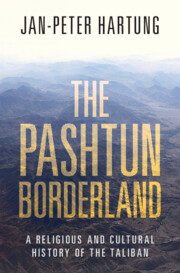Book publication: The Pashtun Borderland. A Religious and Cultural History of the Taliban
We are pleased to announce the publication of a new book by FAU EZIRE associate PD Dr. Jan-Peter Hartung. In The Pashtun Borderland: A Religious and Cultural History of the Taliban, published by Cambridge University Press, the Islamic studies scholar deciphers prevailing conceptions of “the Taliban” and examines their historical roots in the Pashtun border region.
Who are “the Taliban”?
With their return to power in Afghanistan, the need to better understand the history and ideology of “the Taliban” has grown significantly. According to Dr. Hartung, the discourse on “the Taliban” in the Global North has thus far been heavily shaped by contemporary geopolitical and security policy debates, hindering nuanced analyses and resulting in several blind spots.
In his study, Hartung makes an important academic contribution to broadening the understanding of “the Taliban.” His holistic approach to the phenomenon involves deep historical inquiry to uncover the core of their ideological convictions, as well as consideration of the spatial and social contexts in which “the Taliban” emerged. Central to this analysis is the Pashtun borderland—a historically significant and contested region divided by the modern border between Afghanistan and Pakistan.
Hartung’s analysis draws extensively on numerous historical primary sources (in Pashto, Urdu, and Persian), pioneering new insights into the understanding of “the Taliban.”
This work is aimed at anyone interested in the cultural and political dynamics of the region. The Pashtun Borderland: A Religious and Cultural History of the Taliban is available on all major online platforms and in bookstores. For further information, please visit the publisher’s website.

The Pashtun Borderland. A Religious and Cultural History of the Taliban
Jan-Peter Hartung (2024)
ISBN 978-1-009-28927-6 (Hardback)
DOI: 10.1017/9781009289245
